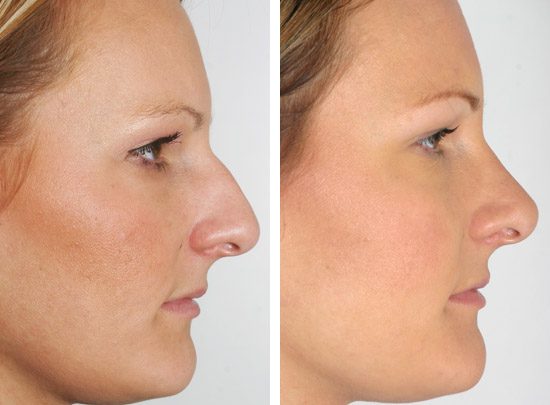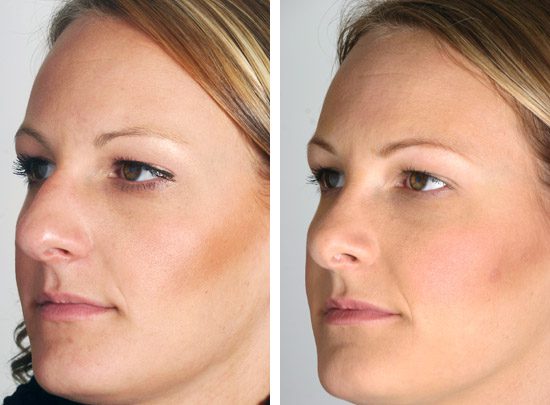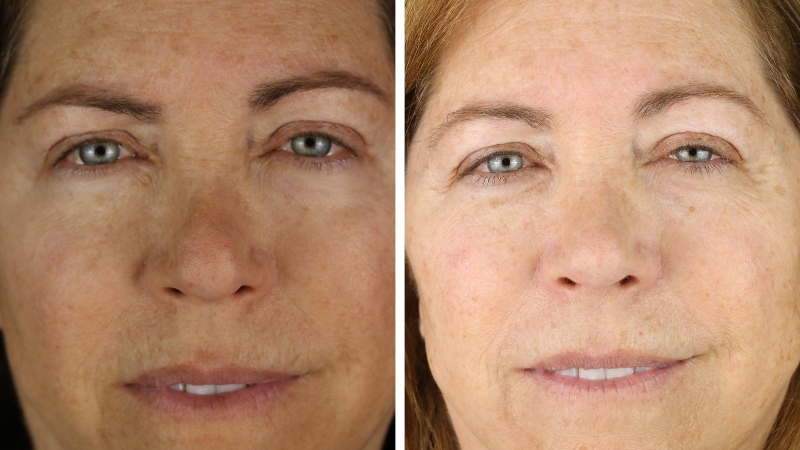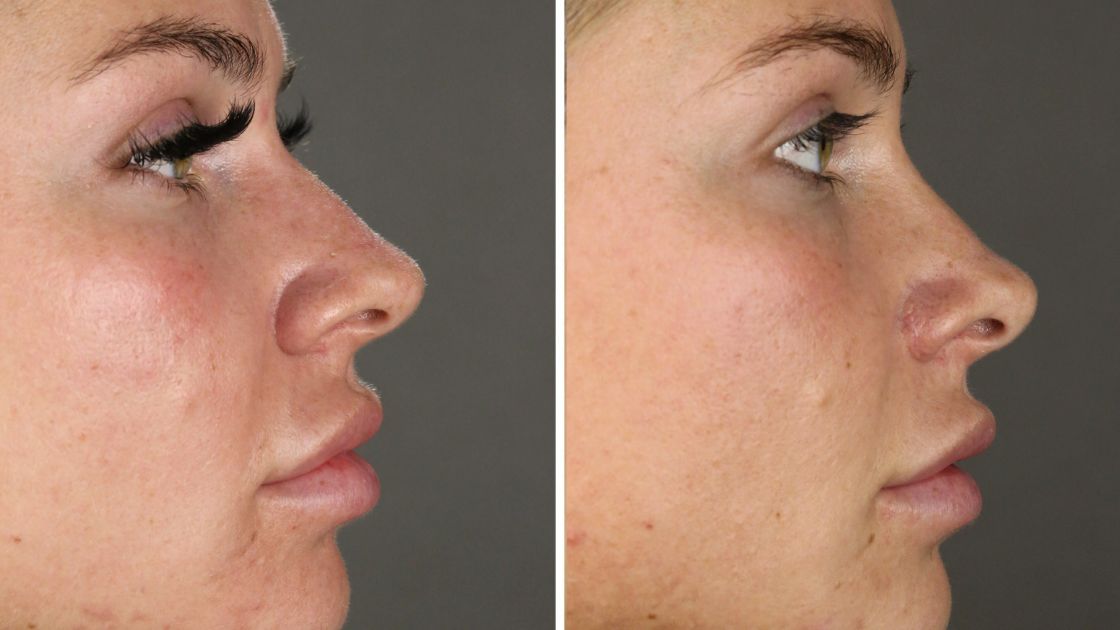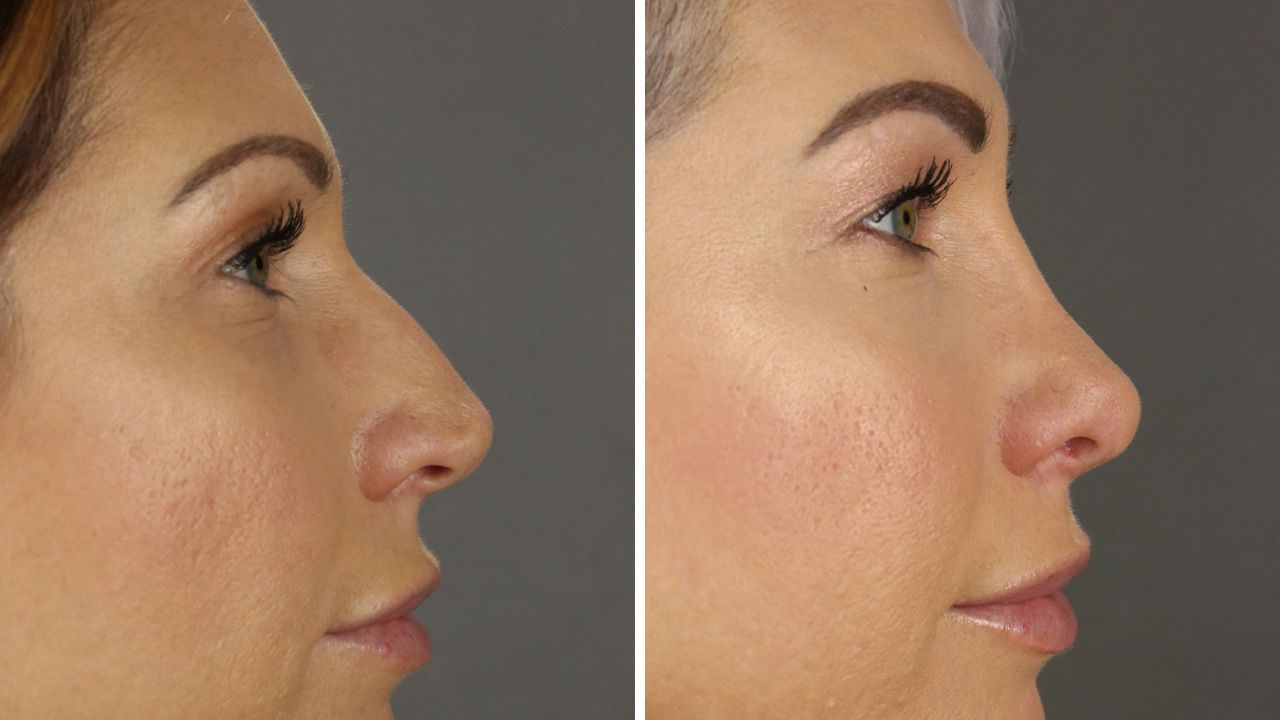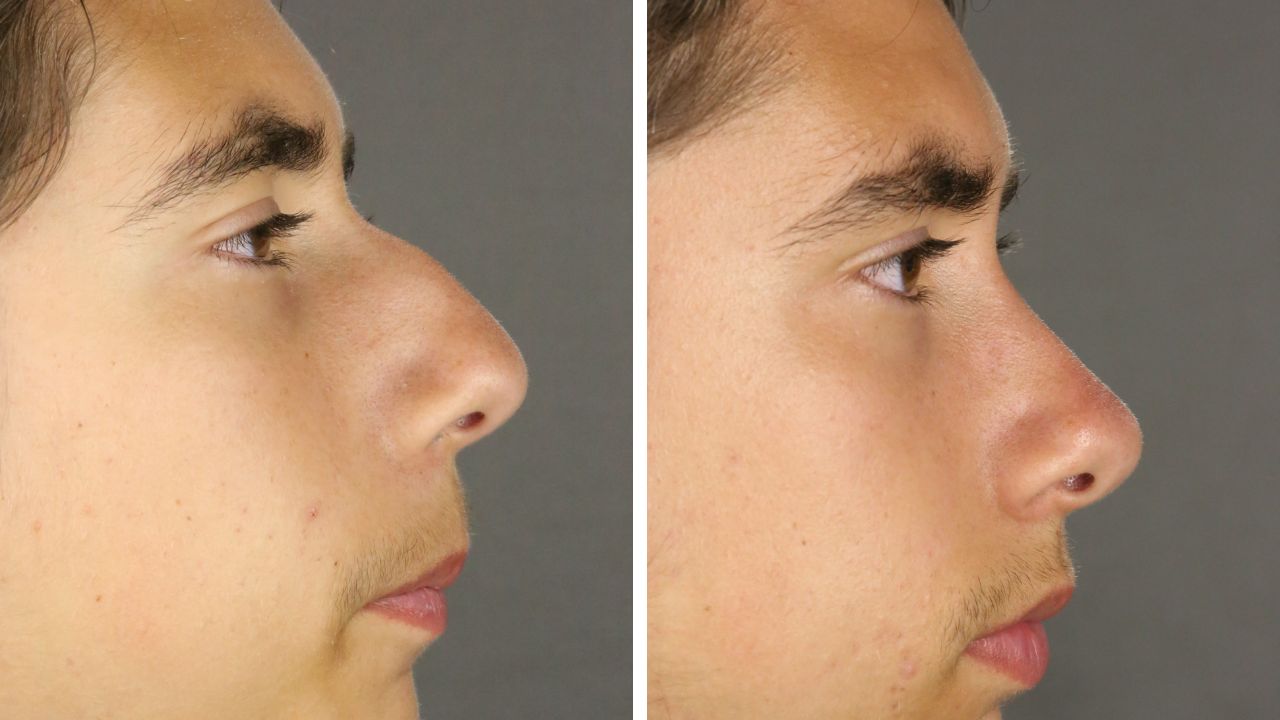This patient noted that her nose was too thick and large for her face and she thought her tip drooped. On examination of the patient’s nose, there was a bump on the bridge of the nose that overshadowed the tip as one moved down the bridge on side view. The tip itself was broad and lacked some definition but tip rotation was already good. The surgical plan was to take down the bump on the bridge of the nose including the cartilaginous tissue of the bump just above the tip so the tip could stand out and become more well defined. The tip would also be recessed and rotated upwards slightly to shorten the nose so as to bring the vertical height or length of the nose into harmony with the vertical height of the face.
Cosmetic Results
The patient was very gratified with the results of her closed rhinoplasty (“nose job”). She especially liked that her nose was smaller and went better with her face. She had wanted the bridge to be straight and as can be seen from her rhinoplasty before and after photos, that was achieved with the tip projecting past the bridge so as to make the tip more prominent than the bridge.
The patient’s nose was thicker prior to her procedure and this reinforced and harmonized with the thick features of the patient’s face. Now that the nose is thinner, shorter and less projecting, it also makes the face appear softer.
Supratip
When following the bridge downward towards the tip on side view, the tip should project past the line of the bridge. The point at which the tip takes off from this line is called the supratip area because it is the area just above the tip. A supratip “take-off” as such lends beauty to the new nose because it both separates the tip from the bridge and helps to make the tip look like it is projecting, even if the tip projects only slightly past the bridge.

